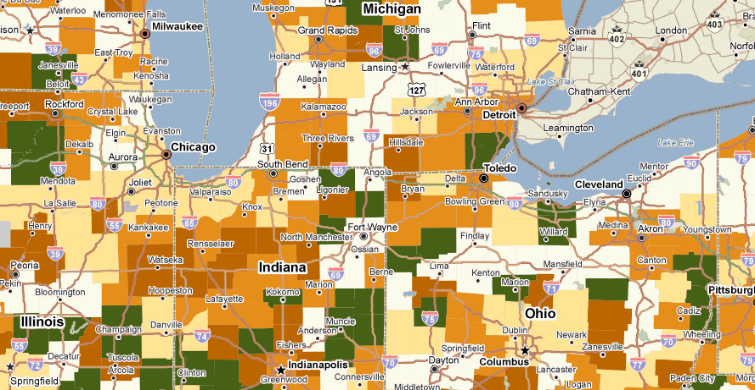Low-income Childhood Obesity data updated

September is National Childhood Obesity Awareness Month. The CDC reports that one in three children in the United States is overweight or obese; a troubling finding because excess body weight in children can lead to a variety of health problems both in childhood as well as later in life. These problems include type 2 diabetes, high blood pressure and heart disease.
On PolicyMap, we have the latest data from the USDA Food Environment Atlas regarding Childhood Obesity. The Pediatric Nutrition Surveillance System (PedNSS) tracks the nutrition of children ages 2-4 who participate in federal maternal and child health programs. This data, available at the county level, can be used to examine the percentage of obese children per county as well as the change over time. PedNSS data is combined from three years of surveys to even out anomalies in the data. Nationwide, childhood obesity among the PedNSS survey population is relatively stable, with many counties experiencing a modest decline from the period ending in 2008.
Low-income childhood obesity data is found in the Health tab under Physical Health > Overweight and Obese > by County. Also updated on PolicyMap are adult overweight and obesity percentages at the state level for the years 2000 through 2012 and for metropolitan areas from 2002 through 2011. Comparing these data to other PolicyMap data sets such as limited food access and people in poverty sheds light on how childhood and adult obesity is related to the compounding effects of social and economic conditions.